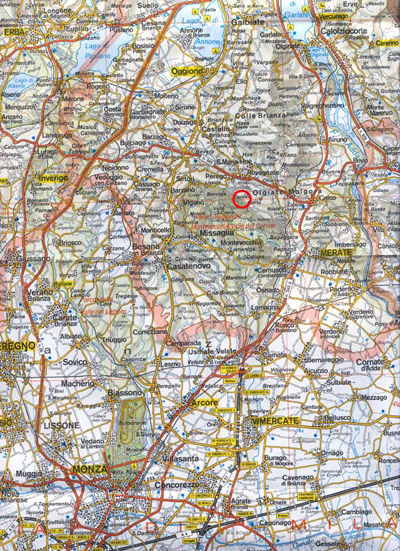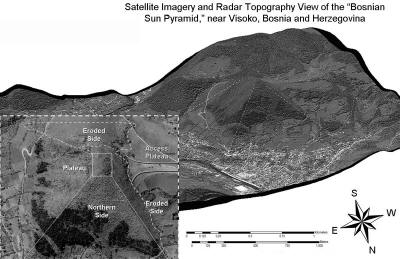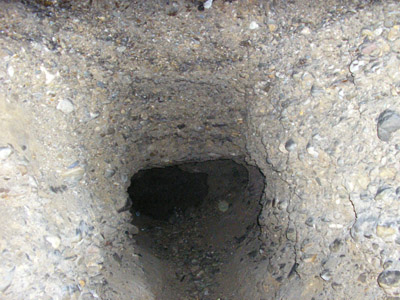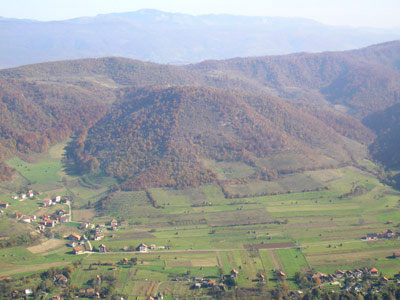|
by Philip Coppens Nexus New Times 13.3 (April-May 2006) Frontier Magazine 12.2 (April-May 2006) from PhilipCoppens Website
The small pyramid of Falicon sits in the hinterland of the prosperous French resort of Nice and is more notorious for covering a subterranean chamber into which many descend but few resurface without the intervention of the local fire brigade.
In Greece, there are now 16 catalogued pyramids.
Though some may be natural, others—like the Hellenikon pyramid near the village of Argolis—are clearly man-made structures. Intriguingly, one thermo-luminescence test by the Academy of Athens has dated the structure to 2720 BC, contemporaneous with the Egyptian pyramid age. Though pyramidal in shape, the European structures do not enthrall like the Egyptian pyramids, which dwarf them in size.
Five hundred years ago, with the discovery of the New World, pyramids were found in Mexico, but in 2001 the discovery of a pyramid complex in Caral, Peru, was announced and again has been dated as contemporaneous with the Egyptian pyramid age. In 1994, the German tour operator Hartwig Hausdorf visited China and on his return reported on the existence of pyramids there—a discovery which has since been validated. The pyramids are even becoming a tourist attraction. Europe, it seemed, had been left behind... but not for long.
Two discoveries—in Italy in 2003, and
Bosnia-Herzegovina in 2005—changed that.
Map of Montevecchia Pyramids In early 2003, the pyramids of Montevecchia ("Old Mountain" in English), only about 30 miles from the Italian city of Milan, were discovered with the use of satellite and aerial imagery. These pyramids are completely covered by earth and vegetation and now appear to be natural hills, but the possibility of something more was enough for the Czech WM magazine and its editor-in-chief Georg Wojnar to visit the area in an effort to locate and survey the site.
The team arrived on 8 May 2003.
Finding the location of the pyramids from the ground proved more difficult than imagined, the team becoming "impressed" with the driving abilities required to negotiate their way towards the hills. After two days, they succeeded in locating the pyramids and began carrying out an initial survey. The team's conclusions appeared in the June 2003 issue of WM. The first pyramid was estimated to have a base of 100 meters and a height of 50 meters.
Three pyramids in total were surveyed, with one pyramid showing clear signs of stones worked into the structure, close to the surface. A platform with an oblong superstructure of 18 by 9 meters in size was also discovered. All three structures have an inclination of 42 to 43 degrees. The sides of all the pyramids align and are offset from the cardinal points by approximately 7–12 degrees northeast. The team wondered whether this was an error in design or a sign of something more intriguing. From the initial aerial surveys, there was speculation that the layout of these pyramids compares with that of the pyramids of the Giza plateau and thus to the Orion constellation—a theory proposed by architect Robert Bauval.
The Czech team argued that their on-site research showed that the pyramids actually align with the passing of Orion at sunrise on the summer solstice. As for the question of when they were built, Italian archaeologist Professor Gregoria was asked for input. He provisionally dated the structures to 3000 BC, making them largely contemporaneous with the Egyptian pyramid-building age.
But no remains in the vicinity have been found that can shed any further light on these structures, and no civilization is known to have inhabited the region and to have built similar structures at the time. As a consequence and despite the positive findings by the Czech team, some critics have argued that the Montevecchia structures may be nothing more than terraced hills with stone supports. The Czech team, however, suggested that the site should be known as "the Italian Giza".
The Italian discovery failed to excite the media, if only because no archaeological investigations were—and have been—carried out.
Europe might have a pyramid... but no
one was too sure.
The story ran in the leading Bosnian newspaper Dnevni Avaz, which reported matter of factly that,
Osmanagich lives in Houston, Texas, and because of his fascination for cultures of antiquity he has visited many ancient structures of the New World and written several books.
In April 2005, he was promoting his new book in Sarajevo when he decided to visit Visoko. He had learned about the hill from Senad Hodovich, director of the Visoko Historic Heritage Museum. The area is rich in Bronze Age artifacts, on display in the museum, and the hill itself is believed to be the site of a mediaeval village.
The local people refer to the hill as "the pyramid", which means that everyone has noticed its pyramid shape... but is it a pyramid?
The likelihood that Osmanagich was confronted with a true pyramid soon became apparent.
Osmanagich has seen similar pairs of
pyramids in Latin America, which together created a gateway into a
valley.
But Osmanagich did not want to leave it at that.
Nukich was most impressed with three layers of polished brown stone that lie an equal distance from each other underground. The hill, it seemed, had been coated with a type of "bad concrete", an unusual mixture of gravel once used to form the blocks which cover the hill.
Some of the stones were removed and were found to have a flat, smooth surface.
Entrance to
the tunnels The results of the test probes inside the structure proved that it is indeed a stone step pyramid. A flat plateau, approximately 2.5 meters wide, is followed by a steep slope of 30 meters, then another plateau, then another steep slope with the same angle—a pattern that is repeated to the top of the pyramid, which has a plateau and the possible remains of a stone structure.
The team also discovered that,
Amazingly, the length of this paved causeway is an enormous 420 meters (1/4 mile) and is perhaps the best evidence that proves we are confronted by a genuine manmade pyramid. Small-scale excavations continued until early November, when winter set in, with the work focusing on what may have been the entrance to a pyramid-shaped temple on top of the structure.
The team also found underground tunnels.
Within a period of six months, the Bosnian team had carried out an amazing amount of work.
Originally, Osmanagich believed that an existing hill had been reshaped into a pyramid shape and then coated with a type of primitive concrete.
But in November 2005, after larger areas
were unearthed, the team concluded that the whole hill is actually a
stone structure—a conclusion that has since been confirmed by
satellite and thermal imagery.
Osmanagich added:
These mounds which Osmanagich mentions are mutually equidistant and all align to the cardinal directions. The two pyramid structures and a third which could be a pyramid are of approximately the same height but differ in overall size.
Osmanagich believes that we can thus "freely talk about the Bosnian Valley of the Pyramids".
Pljesevica,
Pyramid of the Moon So who built these pyramids, and how old are they?
Osmanagich believes that the hills were reshaped by the Illyrian people, who inhabited the Balkan peninsula long before Slavic tribes conquered it around AD 600. Little is known about the Illyrians, but Osmanagich thinks they were more sophisticated than many experts have suggested— evidence for which would be the pyramids themselves. Osmanagich has unfortunately been misquoted about the possible age of these pyramids as being 27,000 years.
This is what Osmanagich actually said:
So the date could be anywhere between 1000 BC and 25,000 BC, though Osmanagich personally favors the Illyrian period, thus providing a much more conservative date than that quoted by the media.
Considering the importance of the discovery, the original team has now established a foundation called Archaeological Park: Bosnian Pyramid of the Sun, which is sanctioned by the Bosnian Justice Department and already has a number of Bosnian archaeologists, geologists, geophysicists, historians and other experts amongst its members.
Excavation, restoration and long-term protection of the site will recommence on 14 April 2006, after the winter snow.
And as such, Europe has truly entered the pyramid age…
|




